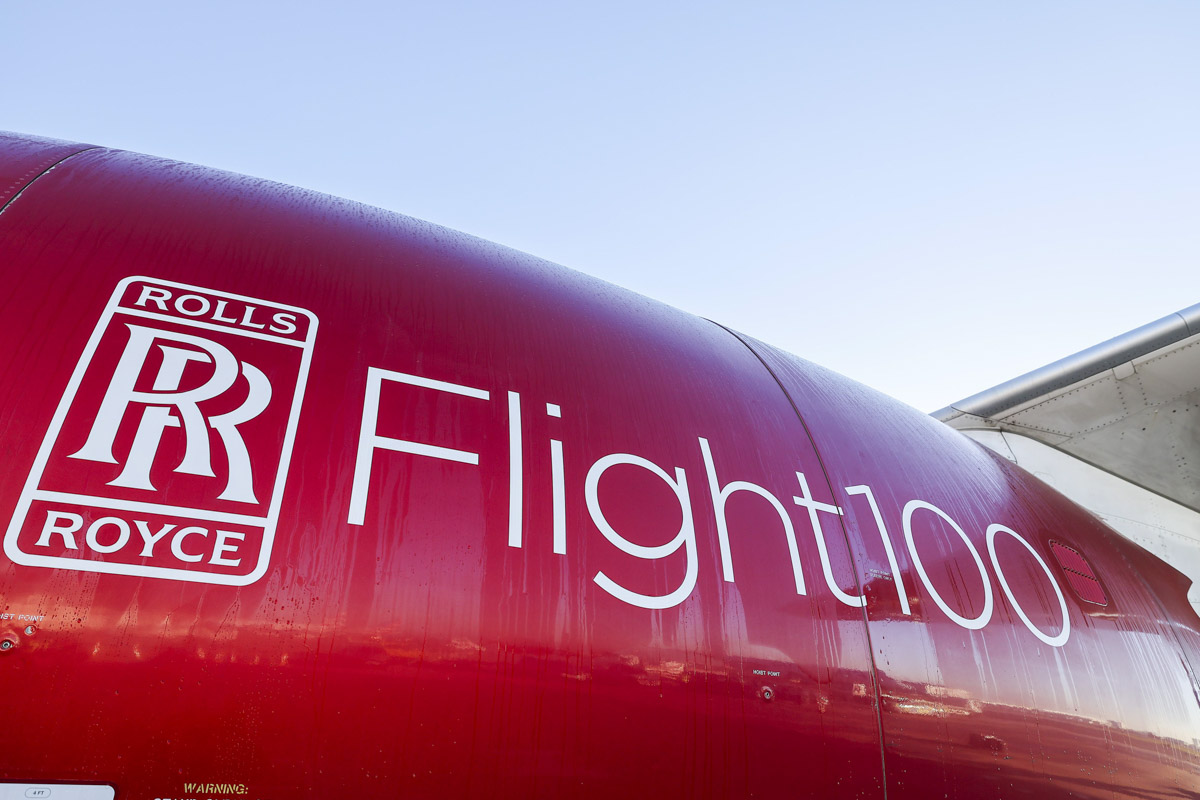What did we learn from Virgin Atlantic’s 100% sustainable aviation fuel ‘Flight100’ experiment?
Links on Head for Points may support the site by paying a commission. See here for all partner links.
On Wednesday, Virgin Atlantic published the scientific findings from the innovative ‘Flight100’ SAF test flight it operated in November last year.
You may recall that I was one of just over 100 ‘industry observers’ to join the flight, which became the first transatlantic flight on a commercial aircraft to operate with 100% sustainable aviation fuels.
It marked an important end to testing by Virgin Atlantic and its partners, including Boeing and Rolls-Royce, which subjected the aircraft’s engines to many hours of testing before Virgin’s Flight100 ever took off.
The challenge was partly funded by the Department of Transport which put up £1 million, matched by Virgin Atlantic. The goal was to validate assumptions and predictions with an end-to-end flight test.
The results are in
Over the past six months, Virgin Atlantic has been working together with it’s consortium partners, including the University of Sheffield and Imperial College, to process the data collected.
On Tuesday night I was invited to an event hosted by Sir Lindsay Hoyle at Speaker’s House in Parliament to find out more.
Here are the headline results:
- Overall, the flight saved 95 tonnes of CO2, a 64% reduction in emissions across the entire flight
- The sustainable aviation fuel used by the flight had a 1% improvement in energy density over regular jet fuel, reducing overall fuel burn by 350kg
- There was a 40% reduction in particulate emissions such as sulphur and nitrogen oxides, as well as reduced contrail formation
What this means for the future
One key feature of Flight100 is that it required no modifications to the aircraft, engines or any other aspect of flight. It was treated as a normal, commercial operation and held to all the same safety standards. The only difference was that the fuel used came from waste sources rather than virgin fossil fuels.
The results above prove that sustainable aviation fuel is at least equivelant to fossil-derived jet fuels. In many cases it is superior, offering a cleaner burn and the associated efficiencies.
For now the maximum volume of SAF that can be used on commercial flights remains at 50%, but Flight100 proves this is just a regulatory limit. There are no reasons why this cannot be increased in the future.
Of course the biggest obstacle to widespread SAF adoption remains production: total global volumes are around 1%, falling short of the 10% the UK Government is likely to mandate by 2030. UK production will need to scale up c.100 times from where it is now to meet that target.
Virgin Atlantic used the event to double down on calls for further support for SAF production, saying “We must now see urgent action from Government, oil majors and private capital to invest in the production capacity needed to deliver a thriving UK SAF industry.”
You can read the full report online here.
PS. If you are not a regular Head for Points visitor, why not sign up for our FREE weekly or daily newsletters? They are full of the latest Avios, airline, hotel and credit card points news and will help you travel better.
To join our 70,000 free subscribers, click the button below or visit this page of the site to find out more. Thank you.

How to earn Virgin Points from UK credit cards (August 2025)
As a reminder, there are various ways of earning Virgin Points from UK credit cards. Many cards also have generous sign-up bonuses.
You can choose from two official Virgin Atlantic credit cards (apply here, the Reward+ card has a bonus of 18,000 Virgin Points and the free card has a bonus of 3,000 Virgin Points):

Virgin Atlantic Reward+ Mastercard
18,000 bonus points and 1.5 points for every £1 you spend Read our full review

Virgin Atlantic Reward Mastercard
3,000 bonus points, no fee and 1 point for every £1 you spend Read our full review
You can also earn Virgin Points from various American Express cards – and these have sign-up bonuses too.
The American Express Preferred Rewards Gold Credit Card is FREE for a year and comes with 20,000 Membership Rewards points, which convert into 20,000 Virgin Points.
SPECIAL OFFER: Until 14th October 2025, the sign-up bonus on the American Express Preferred Rewards Gold Credit Card is doubled to 40,000 Membership Rewards points. This would convert to 40,000 Virgin Points! The spend target is changed to £5,000 within SIX months of approval. T&C apply. Click here to apply.

American Express Preferred Rewards Gold Credit Card
Your best beginner’s card – 40,000 points, FREE for a year & four airport lounge passes Read our full review
The Platinum Card from American Express comes with 50,000 Membership Rewards points, which convert into 50,000 Virgin Points.
SPECIAL OFFER: Until 14th October 2025, the sign-up bonus on The Platinum Card from American Express is increased to 80,000 Membership Rewards points. This would convert to 80,000 Virgin Points! The spend target is changed to £10,000 within SIX months of approval. T&C apply. Click here to apply.

The Platinum Card from American Express
80,000 bonus points and great travel benefits – for a large fee Read our full review
Small business owners should consider the two American Express Business cards. Points convert at 1:1 into Virgin Points.
SPECIAL OFFER: Until 14th October 2025, the sign-up bonus on The American Express Business Platinum Card is increased to 120,000 Membership Rewards points. This would convert to 120,000 Virgin Points! The spend target is changed to £12,000 within three months of approval. T&C apply. Click here to apply.
SPECIAL OFFER: Until 14th October 2025, the sign-up bonus on The American Express Business Gold Card is TRIPLED to 60,000 Membership Rewards points. This would convert to 60,000 Virgin Points! The spend target is changed to £6,000 within three months of approval. The card remains free for the first year. T&C apply. Click here to apply.

The American Express Business Platinum Card
120,000 points when you sign-up and an annual £200 Amex Travel credit Read our full review

The American Express Business Gold Card
60,000 points sign-up bonus and FREE for a year Read our full review
Click here to read our detailed summary of all UK credit cards which earn Virgin Points.





 Rhys
Rhys 





Comments (36)